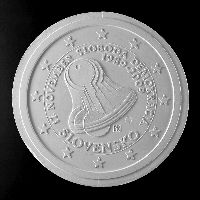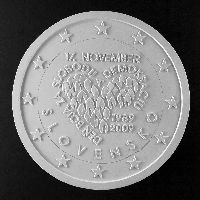-
NBS Tasks
Browse topics
- Monetary policy
- Financial market supervision
- Financial stability
- Banknotes and coins
- Payments
- Statistics
- Research
- Legislation
-
Publications
- Activity Report of the NBS Innovation Hub Annual Report Carbon Footprint Report of NBS Climate-related disclosures of NBS non-monetary policy portfolios Economic and Monetary Developments Financial Stability Report Investment Policy Statement of the National Bank of Slovakia Macroprudential Commentary
- Policy Briefs Report on the Activities of the Financial Market Supervision Unit Research Papers: Working and Occasional Papers (WP/OP) Statistical Bulletin Structural Challenges Other publications Sign up for your email notifications about publications
- About the Bank
- Media
- Frequently asked questions
-
For the public
Browse topics
- About the Bank
- Exchange rates and interest rates
- Banknotes and coins
- Payments
- Financial stability
- Financial market supervision
- Statistics
- Legislation
-
Publications
- Activity Report of the NBS Innovation Hub Annual Report Economic and Monetary Developments Financial Stability Report Macroprudential Commentary
- Report on the Activities of the Financial Market Supervision Unit Research Papers: Working and Occasional Papers (WP/OP) Statistical Bulletin Other publications Sign up for your email notifications about publications
- Frequently asked questions
- Media
- Careers
- Contact
Results of the Anonymous Contest for the Art Design of a Commemorative Coin in a Face Value of 2 Euro Commemorating the 20th Anniversary of the Events of 17th November 1989
First prize (modified design)
Pavel Károly
Second prize
Karol Ličko
Third prize
akad. soch. Vojtech Pohanka
In September 2008, Národná banka Slovenska announced an anonymous public contest for the art design of a commemorative coin in a face value of 2 euro commemorating the anniversary of the events of 17th November 1989 which became a significant milestone in the development of Czechoslovakia and heralded the beginning of a democratic revolution. Due to their importance, 17th November became a national holiday of the Slovak Republic in 2001 and was proclaimed the Day of Fighting for Freedom and Democracy. The commemorative coin will have the same parameters as an ordinary circulation 2 euro coin, it is intended for circulation and will be a legal tender in all euro area counties.
Fourteen authors submitted for the contest a total of twenty-nine art designs of the national side of the coin. The Committee for the Assessment of Art Designs of Slovak Coins evaluated these designs in January 2009.
Recommended for production was the design by Pavol Károly who was awarded the first prize in the contest. The committee appreciated his outstanding and inventing interpretation of the given topic. The central motif is a bell depicted as a bundle of keys, a symbol of the November events, jingled by the citizens at public meetings who were expressing in this way their disapproval of the social order. Their chime fused into a bell clang that is a symbol of freedom and democracy. The committee appreciated the witty design of a bell vibrating in motion as well as the use of keys that became its components as well as its tongue. The bell’s motion signifies the orientation towards the future and the motifs used are accurately associated with the November events. On the basis of a recommendation by the committee and the decision of the Bank Board of the Národná banka Slovenska, the author shortened the original inscription from “17. NOVEMBER” (17th November) and „DEŇ BOJA ZA SLOBODU A DEMOKRACIU” (the day of fighting for freedom and democracy) to “17. NOVEMBER”, “SLOBODA” (freedom) and “DEMOKRACIA” (democracy).
The second prize was awarded to Karol Ličko who won the committee members’ votes particularly thanks to the artistic quality of his design whose central theme is a burning heart accentuated with the compositional arrangement of the inscription. The heart is a general and universal symbol of love and freedom and is a very good medium for conveying the message of the 17th November.
The third prize was awarded to the academic sculptor Vojtech Pohanka. He attracted the committee’s interest by using in his design a motif of barbed wire that symbolizes captivity in the positive interpretation and the end thereof in the negative interpretation.


